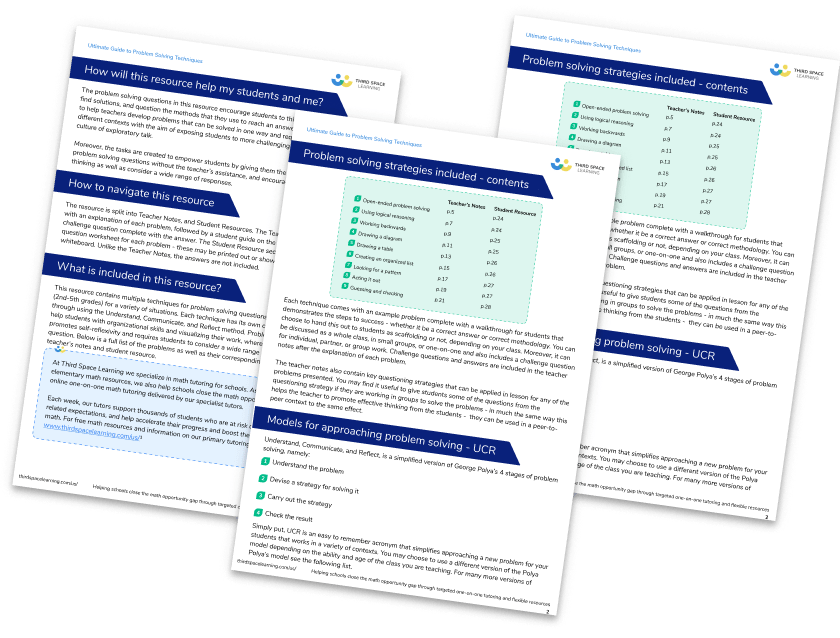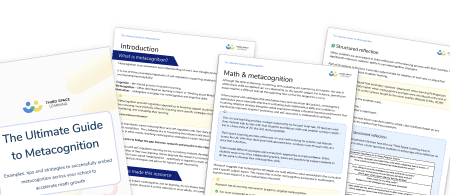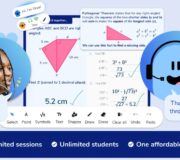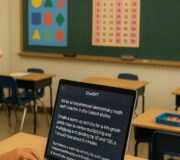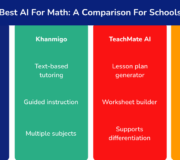What Is Metacognition And Why Does It Matter For Education?
Metacognition can optimize learners’ fundamental cognitive processes, such as memory, attention, activation of prior knowledge, and task completion. By facilitating more efficient and effective learning, metacognition can help students reach their learning goals.
This article delves into the concept of metacognition and its significance in learning. It examines how learners can derive benefits from metacognitive skills and how educators can integrate metacognitive processes into their teaching practices.
The Ultimate Guide to Metacognition
Practical examples, tips and strategies to successfully embed metacognition across your school to accelerate math growth.
Download Free Now!What is metacognition in education?
Metacognition is an awareness and understanding of one’s own thought processes. It refers to a learner’s capacity to plan, monitor, self-evaluate and problem-solve before adjusting their own learning behaviors to overcome challenges more effectively.
Metacognitive abilities are a form of self-regulation, involving self-awareness, and higher-level thinking skills.
The Education Endowment Foundation (EEF), an independent UK-based education charity that researches strategies to raise achievement, outlines the importance of metacognition to effective learning. The EEF’s report bridges the gap between educational research and classroom practice, presenting an understanding of ‘what works’ in a practical and accessible way.

Meet Skye, the voice-based AI tutor making math success possible for every student.
Built by teachers and math experts, Skye uses the same pedagogy, curriculum and lesson structure as our traditional tutoring.
But, with more flexibility and a low cost, schools can scale online math tutoring to support every student who needs it.
Find out moreExamples of metacognition
The EEF’s report notes that beyond a simple definition of ‘thinking about thinking’ or ‘learning to learn’, it can be hard to describe what metacognition means in the classroom.
Metacognition can be subtle, difficult to identify and define, but the importance of metacognition for learners can not be underestimated. Here are three examples that illustrate metacognitive strategies in action in the math classroom:
1. A learner recognizes that they are struggling with a multi-step math problem and takes a moment to unpack the problem before attempting to solve it.
They might ask themselves questions, such as:
• What are the important elements of the question or task?
• Have I solved a similar question before?
2. A learner checks their answer to an algebraic equation by substituting different values into original equations.
When faced with a complex word problem, a learner might write out the problem as an algebraic equation. They would then use strategies for solving simultaneous equations, evaluating overall success by substituting answers into the word problem and checking they are correct.
3. A learner reflects on the strategies they used to help them successfully solve a math problem.
Learners can then use this metacognitive knowledge to inform their future work.
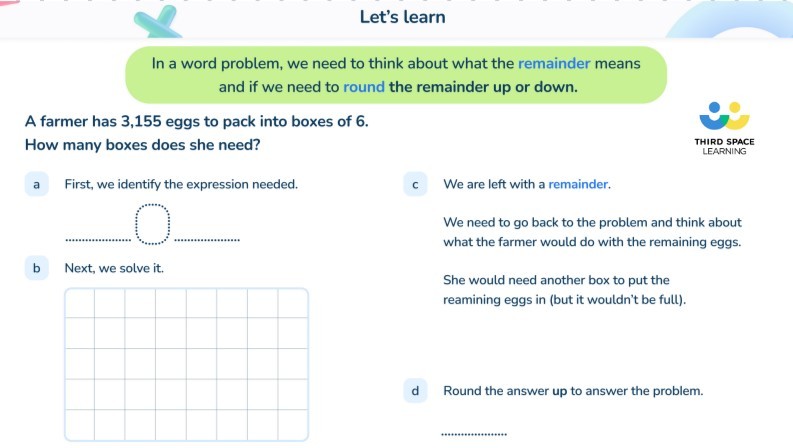
What are the benefits of metacognition in student learning?
Learners with metacognitive skills are able to identify their own cognitive strengths and weaknesses, and to direct their thinking and learning towards areas that require attention. In essence, metacognitive thinking processes empower learners to take control of their own learning and become more effective learners. Benefits of metacognition include:
Impact on attainment
The EEF’s report states that the potential impact of metacognition and self-regulation approaches is high (with students making an average of 7 months’ additional progress when used well). Metacognitive practices can also compensate for any cognitive limitations that a learner might have.
Closes attainment gap
The EEF report states that there is some indication that students who come from disadvantaged backgrounds are less inclined to utilize such tactics and, as a result, could potentially gain the most from them.
The EEF’s research indicates that using metacognitive teaching strategies is beneficial for learners who are at a disadvantage compared to their peers.
Develops more independent learners
When young people are capable of monitoring their progress, it increases student engagement and enables them to manage their own thinking, decision-making and independent learning, both in and out of the classroom.
Cost-effective strategy
In effect, a metacognitive approach to teaching does not require specialist equipment, nor any other large purchases. It only requires teachers to be trained effectively in metacognitive practices.
Therefore, professional development and training opportunities are the main expenses for integrating metacognition in education.
Works well in mathematics
Metacognitive strategies are very amenable to use in math, especially when used hand in hand with approaches that support mathematical discourse in class.
One-on-one tutoring provides a unique opportunity for focused math talk. All teachers wish they could sit side by side with their students and discuss math and problem-solving in depth – but in a busy class of 30, this isn’t always possible.
Third Space Learning provides online one-on-one math tutoring programs for elementary students. With their dedicated AI math tutor, students work through topics at a pace that suits them.
AI tutor Skye models different strategies and explains how to approach math problems. When students move on to more independent practice, Skye asks questions to support students to do the same to develop their metacognitive skills.
Learn more about how we can support your elementary students through one-on-one math tutoring.
The children were all engaged throughout their online session. Listening to them explain their approach to someone else was like a little window into their minds – wonderful!
Teacher, Ealing
Can be transferred to other areas
Metacognition helps learners transmit their knowledge and conceptual understanding across tasks and contexts, including reading comprehension, writing, math, memorizing, reasoning, and problem-solving.
Improves resilience
By identifying their successes and failures, and which specific strategies work best for them, learners have a toolkit for persevering with their work.
Supports emotional and social growth
Gaining metacognitive awareness of their own learning processes, thinking and cognition allows learners to reflect on how to be happy and confident in themselves. Metacognitive thinking also allows learners to consider things from others’ perspectives.
Read more: Growth mindset
Boosts motivation
Research shows metacognition increases learner motivation because learners feel more in control of their own learning. Learners who make use of metacognitive strategies are more aware of their own thinking and more likely to be active learners who learn more deeply.
What are the challenges of metacognition in student learning?
While metacognition is a valuable tool for students, it also comes with its own set of challenges.
1. Metacognition is difficult to define
Beyond a simple definition of ‘thinking about thinking’ or ‘learning to learn’, it can be difficult to describe metacognition in the classroom.
It can also be difficult to realize the impact in practice as metacognitive methods require students to take greater responsibility for their learning and develop their understanding of what is required to succeed.
2. Metacognition requires PD for staff
Teachers, and other educational staff, need to be shown how to develop students’ self-regulation, emotional control, and independence.
Although metacognition is about learners taking control of their own learning, a teacher’s role is vital to develop students’ metacognitive skills and strategies to empower them to do so.
3. Metacognition requires careful planning
Metacognition is most effective when embedded in a school’s curriculum and a specific subject lesson. As the EEF report states, “without cognition, there is no metacognition”.
Introducing new content alongside metacognitive skills can cause cognitive overload, which can hinder the learning process. Metacognitive teaching activities should be strategically integrated to avoid disrupting the ongoing learning process.
Organizing the planning process with the aid of templates, teacher modeling, worked examples, and breaking down tasks into smaller steps can prove advantageous in achieving this objective.
How do I teach metacognition in the classroom?
There is no one set way to improve students’ metacognition.
To help students develop metacognitive skills, EEF recommends that teachers incorporate it alongside subject content rather than dedicating separate classes to ‘learning to learn’ or ‘thinking skills’. Students often struggle to apply generic tips to their subject-specific learning, which can make these types of classes ineffective.
Therefore, teachers should integrate metacognitive strategies into their regular lessons to help students improve their learning and thinking processes. One way to do this is through a seven-step model for learning different subject content at different phases and ages:
- Activating prior knowledge
- Explicit strategy instruction
- Modeling of learned strategy
- Memorization of strategy
- Guided practice
- Independent practice
- Structured reflection
Want to see this in action and how Third Space Learning teaches metacognition in our one-on-one math tutoring? Read our blog on teaching metacognitive skills.
Tips for teachers
Metacognitive strategies empower learners to think about their own thinking. This awareness of the learning process enhances their control over their own learning and enhances personal capacity for self-regulation and managing one’s own motivation for learning.
Here’s how teachers can help learners build metacognition:
- Embed metacognitive strategies into the curriculum.
- Model thinking skills and study strategies in the classroom.
- Use metacognitive talk and encourage self-reflection: What did I learn about this topic that I did not know before? What content was challenging to learn? Do I understand it now? Why did I make the mistakes that I did? Where did I go wrong?
- Encourage learner independence and get parents on board.
Metacognition FAQs
Metacognition is about self-regulated learning; about knowing yourself as a learner.
1. Planning – when learners think about their learning goal and consider how they will approach the task; this includes ensuring they understand the goal, activating relevant prior knowledge about the task, and selecting appropriate learning strategies
2. Monitoring – while undertaking the learning task, learners continuously progress monitoring; this includes the self-testing and self-questioning activities that are necessary to regulate learning, and making changes to their chosen strategies
3. Evaluating – appraising the effectiveness of their plan and its implementation.
Yes, but to be effective metacognition should be taught alongside subject content and embedded within the curriculum.
Do you have students who need extra support in math?
Skye—our AI math tutor built by experienced teachers—provides students with personalized one-on-one, spoken instruction that helps them master concepts, close skill gaps, and gain confidence.
Since 2013, we’ve delivered over 2 million hours of math lessons to more than 170,000 students, guiding them toward higher math achievement.
Discover how our AI math tutoring can boost student success, or see how our math programs can support your school’s goals:
– 3rd grade tutoring
– 4th grade tutoring
– 5th grade tutoring
– 6th grade tutoring
– 7th grade tutoring
– 8th grade tutoring
The content in this article was originally written by online maths tutor and former teacher Pauline Stirling and has since been revised and adapted for US schools by elementary and middle school teacher Kathleen Epperson.
